Jackie Wu, From Broken Back to the Secrets of Playful Fitness
By Adrienne Harvey, SrPCC, RKC-II, CK-FMS
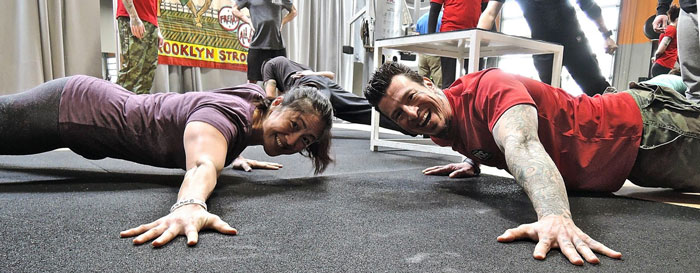
Dragon Door: How did you get into fitness as a career?
Jackie Wu: I have always been active since I was little, and because of ADHD I couldn’t stay still. I was always climbing trees and running around—I have always prioritized being active and just playing, not necessarily working out. Fitness as a career probably started when I was teaching taekwondo. I was very heavily involved with taekwondo for about twenty years, and when I moved to California I ended up teaching at a studio for about seven years and then I broke my back.
Normally, people don’t ask how I got into a
fitness career, they usually ask how I broke my back and that story is actually how I got into the fitness industry.
Dragon Door: So, how did breaking your back lead you to your fitness career?
Jackie Wu: On my birthday week in 2008, I was camping out in the desert with my boyfriend at the time and his family. I was riding on an ATV and ended up in a situation where I had to choose either landing on a mound with a bush on it that would have killed me, or jumping off the bike at 55mph while 15 feet in the air. I chose to jump, because it would at least increase my chances of survival.
At the time I was teaching taekwondo and traveling the world to compete, so I think that played into how I landed and reacted after I landed. I took a breath, wiggled my fingers, and then my toes. When I could feel all of them, I realized that at least I wasn't paralyzed. Then I just laid there for a while so my nervous system could calm down a little bit. My boyfriend at the time and his family thought I was dead and rushed over to me. They brought me back to the trailer where we were camped out for a week—which was not such a great way to spend my 26th birthday.
I thought I wasn’t injured too badly and iced it. We didn’t go back to town until about a week later. I scheduled an x-ray at a private clinic—I didn't have insurance back then. Now, it was two weeks since the accident, but they came back and said that the x-ray was fine. I don't know what happened with that x-ray, or if they looked at someone else's x-ray, but I knew that something was definitely wrong. I'd never broken a bone before, but I knew I wasn’t feeling normal.
So, I decided to do my own rehab and treat my injury like a broken bone. I did a lot of research, experimented, and talked to many professionals with various backgrounds. And I got a lot better, even improving to the point where I could train and compete in Taekwondo again just five months later.
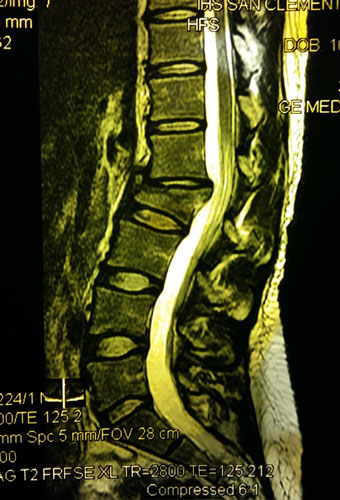
I scheduled an appointment with a new chiropractor for the Monday after a competition, because I had reached a plateau in my recovery. I knew I needed professional, manual help to keep progressing. During the initial exam, she took an x-ray and when she looked at it, she said she would not work on me until a specialist looked at the x-ray, because my spine looked so terrible. Since a full five months had passed since the injury, and bones take six to either weeks on average to heal, the damage was permanent. I asked her about surgical options, but she said that since I was able to function—which was a miracle in itself—I didn’t necessarily need surgery. She wanted to see what we could do to alleviate more pain and helped me create more space between my discs.
Originally, I had a few herniated discs and bulging discs along with my broken L2—which the specialist said was a borderline burst fracture. Basically, a burst fracture is an extreme compression fracture where the bone is crushed to the point that pieces fly out of it. I was very lucky that the rehab I did didn't cause any nerve damage. I had managed to create enough space and stability in my spinal muscles that it helped prevent excessive stenosis—narrowing of the spinal canal that can cause impingement on the spinal cord. I had some, but it wasn't enough to cause severe pain, it was just annoying.
All the other doctors and physical therapists I had seen said that I would be limited to bicycling and swimming for physical activity, and that basically I couldn’t do anything fun like running, jumping, twisting, kicking. Thankfully, I refused to accept that as an answer, especially since I was already strong enough to compete in a martial arts tournament.
My new chiropractor helped me create more space, and I paired that with a lot of
bodyweight exercise and more stability work. During that same time, I was going to school and retaking all the prerequisite classes for the physical therapy doctoral program I planned to start. That's when I met Brian Crilly, who introduced me to Ambition Athletics,
Max Shank's gym.
Before training at Ambition Athletics, I had never liked weight training or even going to the gym. I’d associated gyms with monotony and counting reps on a machine—which I couldn’t stand. It was a huge eye-opener to learn about resistance training—beyond what I could do with my bodyweight—that actually helped my back feel better.
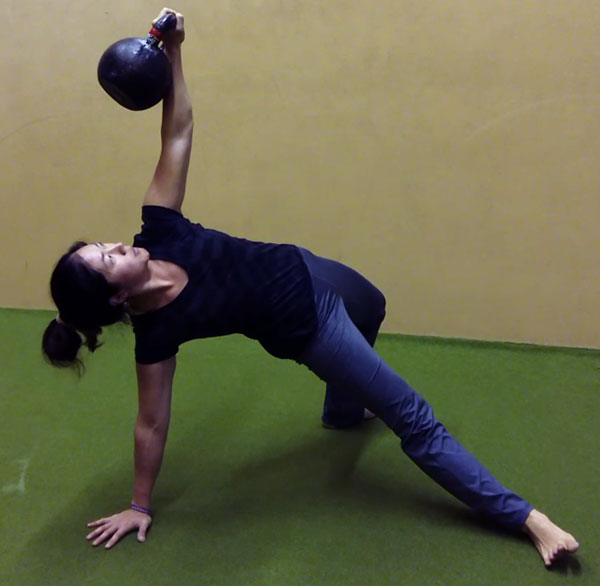
I really liked the culture at Ambition—working out there and trying things on my own made me realize that I wanted to open my own gym. I wanted to have strength training, rehab, and performance under one roof. At physical therapy, they take people from injury or post-operation to where they can function normally—but then they stop. Regular gym strength training never leads to high performance because so much of it just isn’t usable strength. An athlete or a high performer has to go to somewhere else for specialized training. But I think rehab, functional training, having fun, and working towards high performance should all happen at the same place, and I was determined to open it.
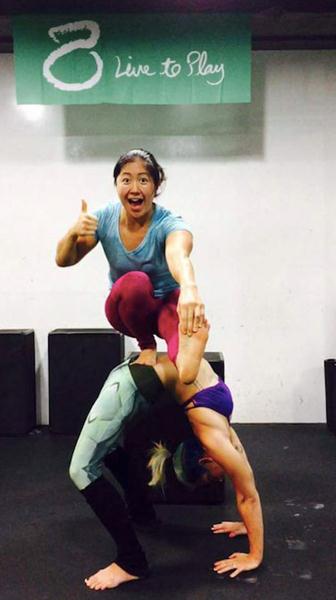
I refocused my goals, but before school started up again I had about four months for a long vacation and to explore. I went to Taiwan because I hadn't been there since I was a kid. At the time I had picked up jiu-jitsu, which was probably not the best idea for someone with a burst fracture, but it was fun, so I did it anyway. After each training session, I would just put myself back together. Before I went to Taiwan, I made sure to find a good jiu-jitsu academy. While I was there, I helped people at the academy with their aches and pains, and even trained some of them with
kettlebells. The owner of the academy realized that no one was really into this in Taiwan, and that it was very needed.
We worked out a plan that would help me get started with my own gym. At first I wasn't sure, but when I got back to the states, I was immediately homesick for Taiwan. After a week, I realized I wanted to move to Taiwan and bought a one-way ticket. If I could start my gym out there without having to go through three years of PT school, then why not? So, I gave myself two months to get everything together.
I started getting specialized education in those two months and took the
HKC with Max. I wanted to make sure to have a solid kettlebell certification. This HKC ended up being very small so Max taught an advanced version. He's a phenomenal teacher and gave us a lot of details. I also got my FMS and other basic certifications.
Then, I moved to Taiwan and started my gym—it was super small at first, but it grew! I started to learn more and found Neurokinetic Therapy. I’m now an instructor for Neurokinetic Therapy and my territory is most of Asia—it used to just be in Taiwan, but I’ve grown the market to now include Hong Kong, South Korea and Singapore. I recently co-wrote a new class for NKT practitioners that's movement-based and is now taught around the world.
A little over a year ago I decided to temporarily move back to California because my Dad was sick. Unfortunately his illness took a turn for the worse, and I am now here indefinitely. But, one thing led to another and that's how I ended up in the fitness industry.
Dragon Door: How would you describe Neurokinetic Therapy?
Jackie Wu: It's basically a way to find the root cause of motor control issues. Many times people will have physical pain somewhere in their bodies that is the result of two things. It’s either poor movement habits which cause altered motor control pathways in the brain and body leading to motor control dysfunction (basically, the brain learned a bad habit). With this dysfunction, the brain will tell parts of the body to move when they shouldn’t, leading to misalignments in the joints and pain.
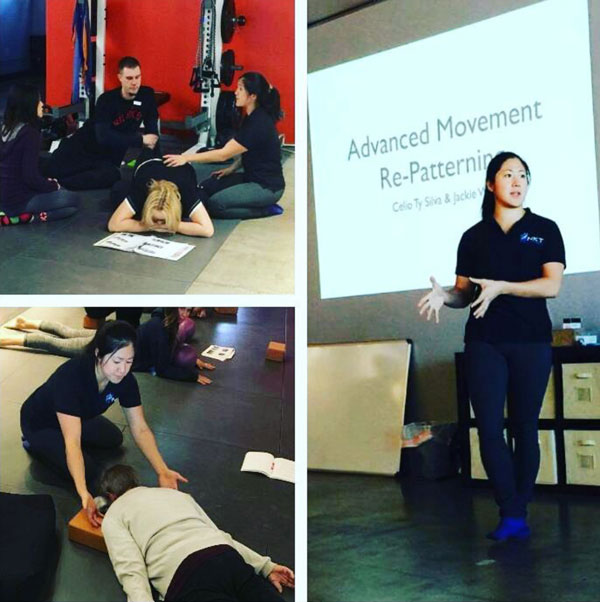
The other reason people experience physical pain is from an injury or trauma which could be a car accident, sprained ankle, or getting elbowed in the face. In those cases, the brain compensates for the injury. The brain will tell the body to shift the weight to one side resulting in bad habits and patterns creating motor control dysfunctions (more bad habits).
Most therapies for pain and injury only address the dysfunction that’s compensating—let’s call them plusses—or the injured part that is being compensated for, minuses. This is why most therapies only get half of the equation, and seem to be based on a lot of guesswork. In life, we have a million different plusses and minuses at any time, but the tricky part is figuring out which plus goes with which minus.
Neurokinetic Therapy has a way to determine which plus goes with which minus, and takes into account the different layers of dysfunction. Often, to get to the particular layer of dysfunction that’s causing pain, you have to address other ones first. Neurokinetic Therapy has a system that removes the guesswork. Next, we use a simple protocol to teach the brain how to change those bad habits into good ones by reprogramming motor control dysfunctions. It's a definitive way to find these relationships, and makes resolving pain and injuries a lot faster and long-lasting.
Dragon Door: You recently did the PCC, what inspired you to take that course?
Jackie Wu: I wanted to take it—and the
RKC—because I want to eventually host both workshops at my gym in Taiwan. I want to get all this stuff to Taiwan because it's fantastic. I think its a really good way for people to learn kettlebells with the right form, good methods, and good instruction. The RKC style and the PCC style with strict form is a big part of what I do in my own practice and how I work with other people.
So when I took the HKC and started working with Max, it really opened my eyes to form and options for people who are injured or in pain. I use those principles along with various modalities that I’ve learned to develop my own methodologies and training style. I like the idea that there is a way of working out that can make us resilient, prevent injuries, and is very transferable.
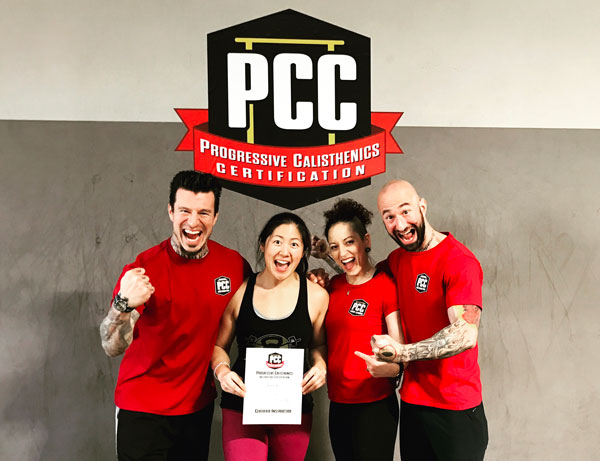
I took the
PCC this past weekend and it was a ton of fun. I hadn’t tried many of the things they taught, but I was able to do a lot of it very quickly. One of the biggest things I've gotten from the RKC style of training and from doing my own rehab is improved body awareness that's transferable to new skills. I've been using kettlebells and calisthenics for years now to build myself up. At first I just used them so I could perform normally without my back hurting. But now the training is fun—I can even do crazy weird yoga poses that many people can't even do with a normal spine.
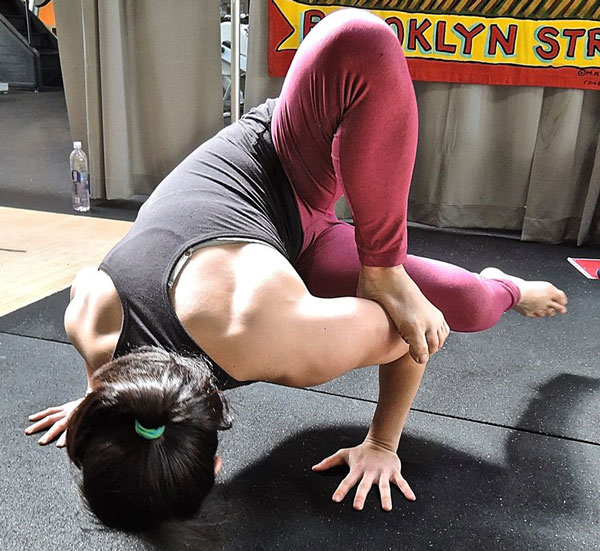
Dragon Door: What are you working on now in your own training?
Jackie Wu: It changes every day because of my work and my crazy travel schedule. For example, my workout yesterday was mostly rehab, and actually many of my workouts are rehab focused. If I feel like part of my body is out of whack, which happens a lot because of my injury, then I make sure to adjust my workout. Yesterday, both of my shoulders felt a little out of whack so instead of any upper body pushing, I worked to resolve my shoulders so I could play more later. I did a lot of cross-body drills like single leg deadlifts, lever presses, rehab-based shoulder exercises, and a lot of play.
Other times, my workouts are all play—I don’t even call it training when I am working on a particular move because it’s so fun. I also lift when I feel like it, but I can only lift heavy when my back feels good or I won’t be able to walk for a week. So, while I do a lot of bodyweight exercises, I also lift and do heavy kettlebell swings and
pull-ups.
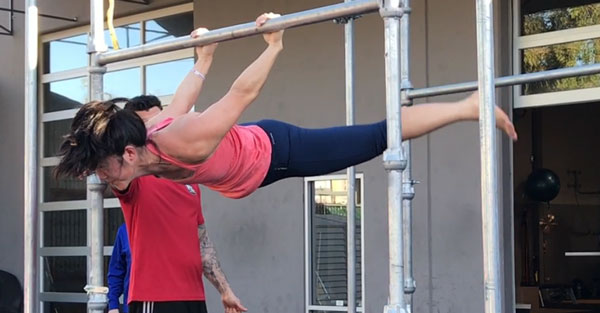
I think it’s most important to find a physical activity that you enjoy, and just do more of it. If someone just wants to be healthy, I don’t think they need to follow a particular training regimen. Specific goals like pressing a particular weight may require a training program, but if someone isn’t looking to compete or get to a particular aesthetic goal, I think it’s more important to find physical activities they enjoy and do them as often as it makes them feel happy. I would like people to understand that they don't have to be on a strict plan of working out 4-5 times a week for an hour each time, it doesn’t have to be that calculated.
The other day I realized that I've tried nearly every diet along with a ton of different training programs—including competing in martial arts—but right now I am probably in the best shape of my life. I'm the leanest I've even been, including when I was competing and having to make weight. My body image is better than ever before, and I’m not stressed out about my workouts. This is all because my "training program" is just to play often. I wish I could have figured this out earlier, but I think it was a process I had to through to appreciate what I do now.
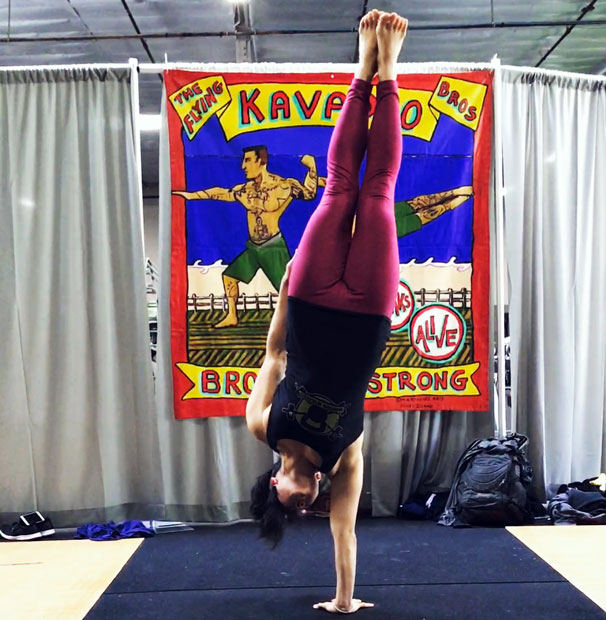
Back